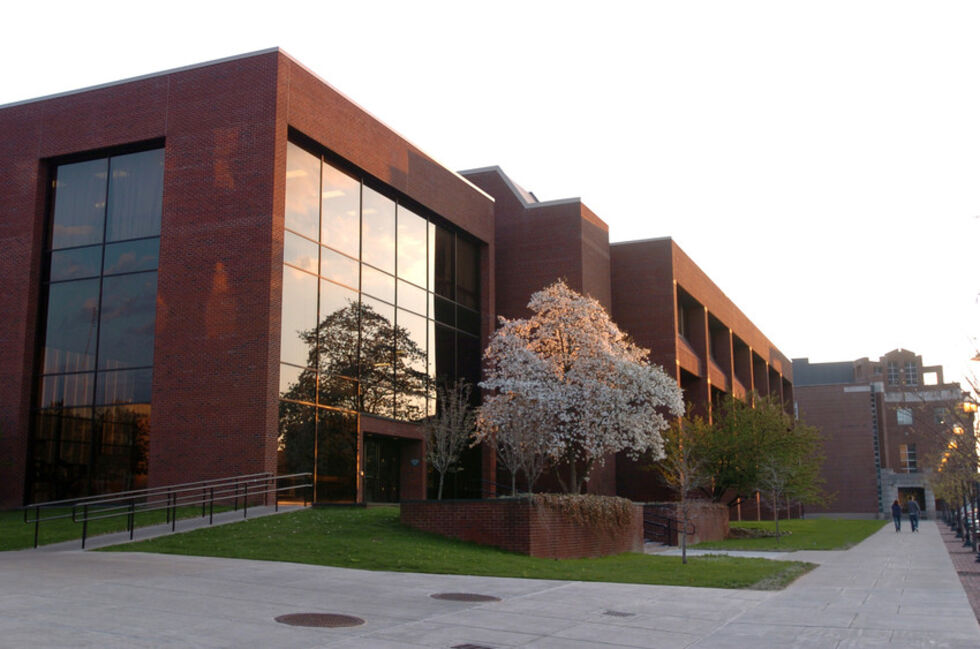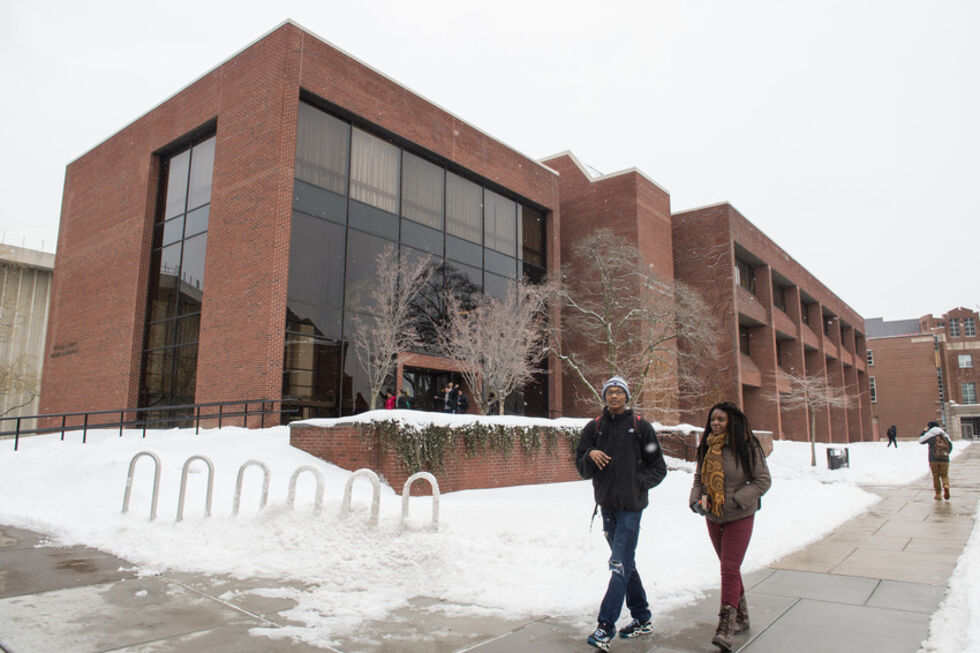Heroy Geology Lab
"William B. Henry Geology Laboratory" by King & King, Syracuse , 1970-1972
Today, the Heroy Geology Lab is home to the Department of Earth Sciences. In addition to its research and teaching facilities, Heroy houses several impressive artistic and educational installations. An inflatable 10-foot globe rests above the lobby entranceway. The globe is imprinted with a massive NASA mosaic photograph of Earth and it rotates on the same axial tilt as the Earth. The lobby also includes interactive displays where visitors can learn about geological events happening across the globe. The lobby is also home to artwork by Rico Lebrun, including the triptych The Crucifixion and the two related paintings, The Cross and Ladder of the Cross. The second floor includes three massive maps. The first map features the topography of the world. The second map combines satellite images to create a cloudless mosaic of the world. The third map provides a scientifically accurate representation of upstate New York.
In 1966, William Bayard Heroy, a renowned petroleum geologist and SU graduate (PhB ‘09) offered to contribute money for a building for the Department of Geology. Previously, the Department was housed in Lyman Hall. The offer was graciously accepted. The building took two years to build and was completed towards the end of 1971 and the Department moved into Heroy Laboratory in between December of 1971 and January of 1972. The building has a unique architecture. The walls angle inwards under windows. The building also included drainage and fume systems to safely neutralize and remove noxious chemicals and gases used in the laboratory experiments.
The Lab underwent a major multi-year renovation starting in 2010. To meet the demands of new research equipment, the building’s electrical, water, drainage, and cooling systems were significantly upgraded. Custom clean laboratories for research in isotope and low-temperature geochemistry were built as well as a computer-based teaching laboratory and a microscopy-teaching laboratory. The lobby was converted from a largely unused area into an educational space, including a 10-foot globe and interactive displays.
SU University Archives; Jordan, S. (1987). Syracuse University: The Pioneer Days. SU Press. "Hold Observatory." SU Archives Buildings website; Kirst, S. (2015, February 22). “A landmark, a romance, the stars, brought into one: At SU, Marvin Druger's heavenly tribute to his wife.” Syracuse.com; Hobso, K. (2015, February). “Professor emeritus honors late wife with Holden Observatory donation.” The Daily Orange; Gorney, J. (2006). Syracuse University: An Architectural Guide. SU Press; Hardin, E. (1993). Syracuse Landmarks: An AIA Guide to Downtown and Historic Neighborhoods. SU Press; Burton, R., & Pitoniak, S. (2019). Forever Orange: The Story of Syracuse University. SU Press; Gao, B. (2017). Holden Observatory: Final project for VR Storytelling Class.” YouTube; SU Photo and Imaging Center.



